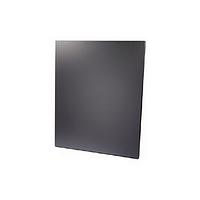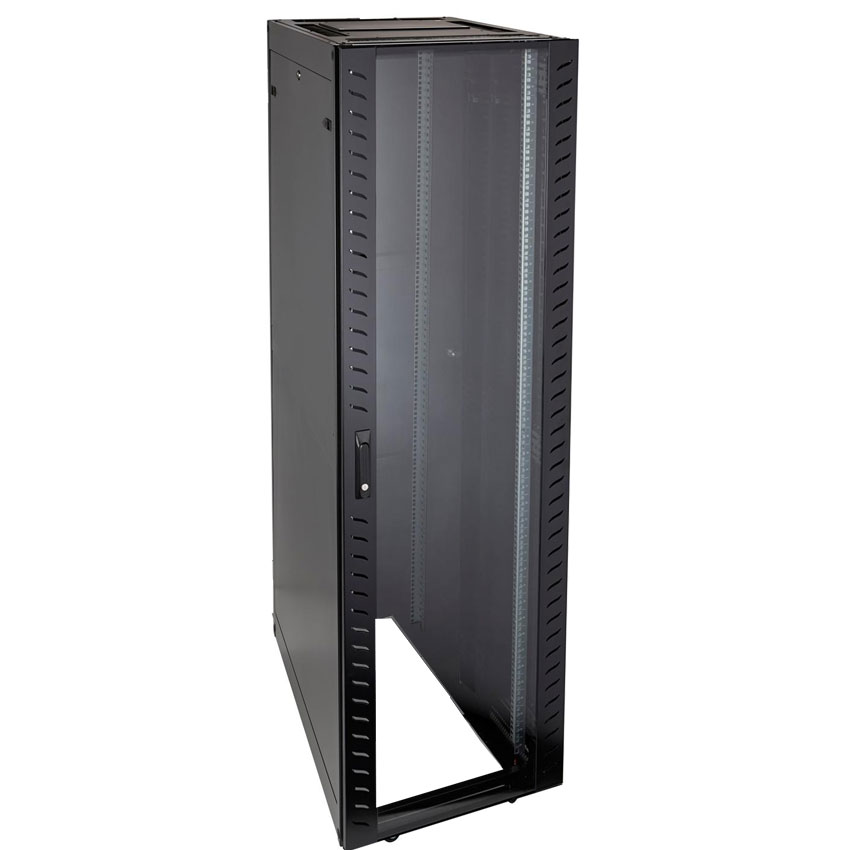How to select a cabinet
When it comes to choosing a Data or Server cabinet, there can be a lot of options to consider. It can be overwhelming to try and compare all of the different options and variations. However, by focusing on your specific requirements one at a time, you can narrow down your choices and find the enclosure that is the best fit for you. This approach can help you avoid making a decision that doesn’t meet your needs, and can save you time and hassle in the long run.
Size
When deciding on the size of your data or server cabinet, it’s important to take into account the equipment you need to store. This can include items such as CPUs, monitors, keyboards, servers, Network Switches, hubs, Routers & Modems, and Uninterruptible Power Supplies (UPSs). Make sure to consider the depth of your equipment, as servers typically require more depth and may need a cabinet that is at least 42 inches deep. Additionally, remember to leave room for cabling and power provisions.
If you have a room with 8-foot ceilings, a standard full-sized cabinet that is 84 inches high is typically the most space-efficient option. However, if you have limited space, you may want to consider a smaller cabinet or a wall-mounted cabinet. Keep in mind that it is generally more practical to choose a larger cabinet, even if you have limited space, as it will allow you to store additional equipment and provide extra space for cable management.
Rails
Rails are a crucial part of any data or server cabinet. They provide mounting holes for attaching equipment or shelves, and the most common spacing between rails is 19 inches with hole-to-hole centres measuring 18.3 inches. This standard was originally used for racks that held railroad signaling equipment, but it is now widely used to mount modern computer equipment. Another less common standard is 23-inch rails, which can also be used with certain types of rack-mount equipment.
A standard cabinet typically has two pairs of rails, one at the front and one at the back, that support the equipment at all four corners. These rails may also be adjustable front to back to accommodate different equipment depths. The holes in the rails are used to mount the equipment and can be either 12-24 or 10-32 tapped holes for use with bolts. The most common standard, however, is the M6 square hole, which is used with cage nuts that snap into place to secure the equipment. This helps to prevent stripped threads, which can occur when using tapped holes with equipment that is frequently changed.
“Rack units,” or “U,” is a unit of measurement used for cabinet rails and equipment. One rack unit is equal to 1.75 inches of usable vertical space. This means that a device that is 2U would take up 3.5 inches of space. The height of a cabinet in rack units is usually marked on the rails and is generally smaller than the cabinet’s external height. The width of the rails is standard, so the amount of vertical space determines the amount of equipment that can be installed in the cabinet.
Doors
When selecting cabinet doors, think about whether you really need them. Cabinet doors can protect your equipment and make the cabinets look neater, but they may not be necessary in a protected data center and could just get in the way. If you do decide to have cabinet doors, there are several options available, such as perforated, mesh, plexiglass, polycarbonate, and solid metal. Choose the type of door that best meets the ventilation needs of your equipment.
The type of door you choose should depend on the ventilation needs of your equipment. Perforated or mesh doors allow for good airflow, while solid doors may be necessary if you are using an enclosure blower or other ventilation system that moves air from the bottom to the top of the cabinet. Some doors also have built-in fans to help move air through the cabinet. In spaces with limited room, split doors are a good choice because they require less clearance to open.
If security is a concern, choose an appropriate lock for your cabinet doors. Key locks are the most common but can be problematic due to lost keys and the ease with which keys can be duplicated. Combination locks are a good alternative, as they provide secure access without the risk of lost keys. The most secure lock option is a biometric lock that requires a finger scan.
Side panels
 Like doors, side panels are optional and may be left out in protected data centers, except where they are necessary for ventilation control. Without doors or sides, a cabinet starts to look like a four-post rack. However, you can add doors or sides to a cabinet if necessary, but you cannot do so with a rack.
Like doors, side panels are optional and may be left out in protected data centers, except where they are necessary for ventilation control. Without doors or sides, a cabinet starts to look like a four-post rack. However, you can add doors or sides to a cabinet if necessary, but you cannot do so with a rack.
Additionally, a cabinet usually has adjustable rails, while a four-post rack typically does not.
Moisture and dust resistance
If you need to house delicate electronic components outside of a protected data center, such as on a factory floor, it’s important to look for a data or server cabinet with a
NEMA rating. The National Electrical Manufacturer’s Association (NEMA) provides guidelines for cabinet certifications, and there are several common NEMA ratings for data cabinets.
NEMA 12 cabinets are designed for indoor use and provide protection against contaminants such as falling dirt, circulating dust, lint, fibers, and dripping or splashing liquids. They also offer protection against oil and coolant seepage. NEMA 4X cabinets are weather-proof and suitable for indoor or outdoor use. They provide protection from windblown dust, rain, and hose-directed water, and are also corrosion-resistant.
When selecting a data or server cabinet, it is important to consider the environment in which it will be used and the level of protection needed for the equipment it will house. A cabinet with a NEMA rating can provide added protection in environments that may be more challenging or potentially harmful to electronic components.
What is a NEMA rating?
The NEMA rating system is a set of standards used to define the types of environments in which an electrical enclosure can be used. These standards are developed and maintained by The
National Electrical Manufacturer Association (NEMA), and are useful in determining the suitability of a particular enclosure for a given environment. The NEMA rating of an enclosure indicates its ability to withstand certain environmental conditions, such as exposure to dust, water, oil, and other potentially harmful substances. This information can help you choose the right enclosure for your needs, and ensure that your electronic equipment is protected in the intended environment.
Assembled or not
If you need to quickly set up your equipment, it may be best to order a preassembled cabinet. This way, you can simply load your equipment as soon as the cabinet arrives. However, keep in mind that a preassembled cabinet may be difficult to manoeuvre through narrow doors or tight spaces. In these cases, a flat-pack cabinet may be a more suitable option. Flat-pack cabinets require some time and effort to assemble, but they can easily fit through narrow openings.
Power provisioning
Cabinets need provisions for powering enclosed equipment and for managing the cables associated with the equipment.
Rackmount power strips mount either vertically or horizontally with a wide range of outlet counts, types, and spacing. Power distribution units (PDUs) are high-end power strips that include surge protection and often have additional capabilities such as remote management and metering. Power distribution units (PDUs) can be rack-mounted or mounted behind the rails, in which case they do not take up any rack space. When selecting a vertical (0U) PDU, ensure that it is compatible with your cabinet for easy mounting.
Uninterruptible Power Supplies (UPSs) are an important part of power provisioning. If you’re planning to use a rackmount UPS, it’s important to allot space when planning the cabinet.
Uninterruptible power supply (UPS) units are usually mounted in the bottom of a cabinet due to their weight. Alternatively, multiple UPS units may be housed in a separate cabinet in the data center.
Cable management
Although most cabinets come with cable management features, it is still important to plan for additional organizers and raceways to keep cables organized. By mapping out your connections in advance, you can determine the most efficient way to organize the cables. Knowing where the connectors are on your equipment will help you decide where to run cables horizontally and where to run them vertically. It is crucial to have a plan in place to avoid future problems with disorganised cables.


